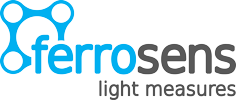- A. Schliemann, C. Homann C, G. Hennig, et al., “Non-Invasive Zinc Protoporphyrin Screening Offers Opportunities for Secondary Prevention of Iron Deficiency in Blood Donors”
Transfusion Medicine and Hemotherapy, 2023
In this study, the researchers around Dr. Anne Schliemann (LIFE Center, University Hospital Munich) used a prototype of FerroSens’ FIDscreen device for non-invasive screening of iron deficiency on a cohort of 100 blood donors. They could show that FerroSens’ technology is able to measure the iron status marker zinc protoporphyrin IX / heme in red blood cells very accurately during blood donation through the tubing that connects the donor with the blood donation bag. In addition, the researchers could demonstrate that the zinc protoporphyrin IX / heme ratio identified donors with severe iron deficiency much more accurately than the routinely performed hemoglobin measurement.
- C. Füllenbach, P. Stein, P. Glaser, et al., “Screening for iron deficiency in surgical patients based on noninvasive zinc protoporphyrin measurements“.
Transfusion, 2020. 60(1): p. 62-72.
The paper shows the results of a multi-center study at the University Hospitals of Frankfurt and Zürich on 584 surgical patients.
In the study, a patient cohort where most of the patients had co-morbidities and accompanying inflammation was deliberately chosen, because for these patients the determination of the iron status is especially challenging. This is because in case of inflammation the conventional iron parameters are often disturbed (especially ferritin). The optimum in this situation is to measure a multitude of iron status parameters and to diagnose the iron status based on the full clinical picture. However, due to cost reasons, availability of specialized laboratory equipment and time constraints, this full assessment is most often not performed. In the study, it was now compared which single iron status marker gives the best results in comparison to the full clinical picture. The study revealed that the best single marker is zinc protoporphyrin (ZnPP), which is the marker that the FerroSens device FIDscreen measured non-invasively. With a newly developed decision algorithm, the non-invasive measurement with FIDscreen suffices in 77 % of all cases for diagnosis and performs equally well as the full clinical picture. This can lead to dramatic cost savings, as in the majority of all cases only the cost-effective FIDscreen measurement has to be performed. Only for a small sub-sample of the original population are further measurements recommended to define the ideal treatment.
- C. Homann, G. Hennig, F. Maier, et al., “Non-invasive measurement of erythrocyte zinc protoporphyrin in children“.
Pediatric Research, 2019. 85(3): p. 349-354.
In this study, non-invasive zinc protoporphyrin (ZnPP) measurement was evaluated in 99 hospitalized children aged between 9 months and 5 years. For comparison, the amount of soluble transfer receptor (sTfR) was determined from blood samples by high-performance liquid chromatography (HPLC). The sensitivity and specificity of the non-invasive ZnPP measurement was 67% (39-88%) and 97% (91-99%), respectively, compared to a reference group of HPLC measurements.
- G. Hennig, C. Homann, I. Teksan, et al., “Non-invasive detection of iron deficiency by fluorescence measurement of erythrocyte zinc protoporphyrin in the lip“. Nature communications, 2016. 7: p. 10776.
An optical and non-invasive method for the quantitative measurement of zinc protoporphyrin (ZnPP) in red blood cells on the lower lip is presented. The ZnPP value in µmol/mol heme can be determined within one minute by measuring the fluorescence emission after excitation with blue laser light by placing a glass fiber on the mucosa of the lower lip. In a small study, 35 of 56 women were iron deficient (verification measurement by HPLC blood analysis). The sensitivity and specificity of the non-invasive measurement were 97% and 90% respectively.


